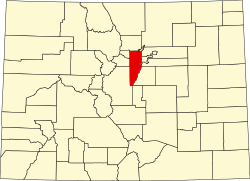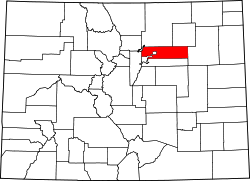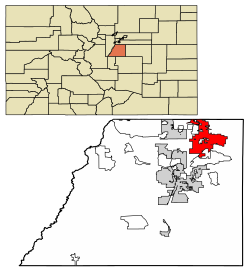Okay, so, like, landscape design in Aurora, right? When you think about it, its not just about throwing some petunias and a sad-looking spruce in your yard, yknow? Its way more complex than that!
(I mean, seriously, who wants a boring yard?)
Its about considering the whole environment, the existing architecture of your house, and even, gasp, the soil! Aurora, being Aurora, has its own, uh, peculiar challenges. The weather, for one, isnt exactly predictable. You cant just plant, like, a tropical paradise and expect it to thrive(not gonna happen!). You gotta think about plants that can handle the wild temperature swings and the occasional, completely unexpected, early frost.
And then theres the design element. Its not just about pretty flowers; its about creating a space thats functional and aesthetically pleasing. A space you actually want to spend time in! Perhaps a serene patio for those summer evenings or a playful area for the kids? Its all interconnected. So, no, it isnt just planting.
Its almost an art form, really. But an art form that involves, like, shovels and dirt. Who knew?! Its about crafting an outdoor space that reflects your personality and enhances your lifestyle. It shouldnt be overlooked! And its definitely not simple, is it?!
First, I need to figure out the key aspects of landscape design in Aurora. Aurora is a city in Illinois, so I should consider the local climate, common design elements, and any specific challenges or trends there.
Landscape design in Aurora, Illinois, aint just about pretty flowers, yknow? Its a whole thing tied up with the local climate and how folks actually use their outdoor spaces. Being in the Midwest, Aurora throws some serious weather our way – scorching summers and brutally cold winters (brrr!). So, any good landscape design has to consider plants that can handle that drama. Think tough perennials, native trees, and shrubs that wont just keel over at the first sign of frost, like you want to avoid annuals that do not return each year.
Common design elements around here often involve creating inviting patios or decks for entertaining. Fire pits are a big hit, too, extending the outdoor season even when the weathers trying to be a jerk. And water features, like small ponds or fountains, can add a touch of tranquility to a backyard oasis. Oh, and dont forget about lighting! Its crucial for safety and ambiance during those long winter nights.
Of course, there are challenges. Auroras soil isnt always the greatest, so soil amendment might be a must!. Drainage can also be a problem in certain areas, leading to soggy lawns and unhappy plants. But hey, thats where a good landscape designer comes in! They know how to assess the site, address these issues, and create a design that thrives despite the challenges.
One trend Ive been noticing is a greater emphasis on sustainability. Folks are increasingly interested in using native plants to support local ecosystems, reducing water consumption, and minimizing their environmental impact. And thats awesome! Its not just about making things look nice; its about doing so responsibly. So, yeah landscape design is complex, but it is not impossible!
Starting with the basics: maybe an overview of local climate and soil. That makes sense as a foundation. Then seasonal considerations since Aurora has distinct seasons. Native plants would be important for sustainability. Hardscaping elements like patios or walkways are common in landscape design. Water features could be another point.
Landscape Design in Aurora: Getting Our Hands Dirty
Alright, lets talk landscape design in Aurora, Colorado. You cant just jump in without knowin whats what, ya know? We gotta start at the ground level, literally! First up, our local climate is, well, pretty darn dry. (Think sunshine and low humidity!) And the soil? It aint exactly the richest, often more clay-like and alkaline. Understanding this is non-negotiable.
Next, Auroras seasons are, to put it mildly, distinct. From scorching summers to snowy winters, the landscape endures a lot. Spring and fall are fleeting, so planting gotta be strategic. Seasonal considerations definitely matter!
When picking plants, look at native species. Theyre adapted to our conditions, meaning less watering and fussing, which is a win-win, right? Plus, they support our local ecosystem. Its not just about beauty; its about sustainability, duh.
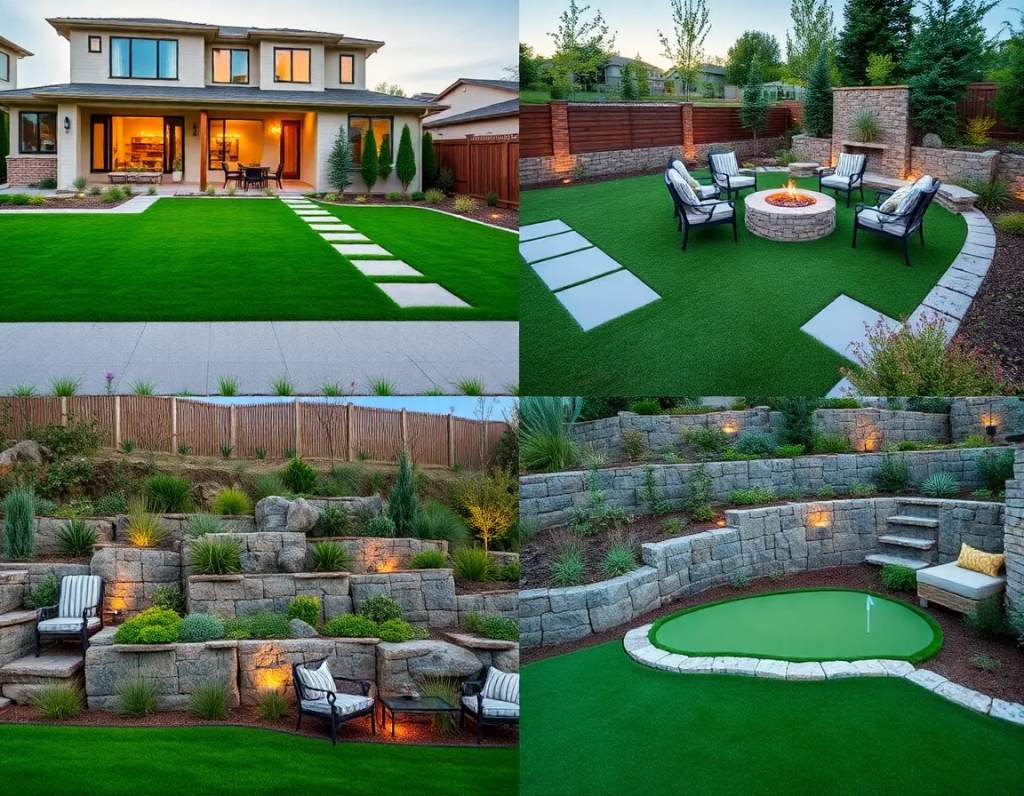
Now, lets move beyond the plants. Hardscaping, like patios and walkways, adds usability and structure to a yard. Consider materials that can withstand the freeze-thaw cycles, cause concrete cracks, I tell ya! Think about flagstone or pavers designed for our climate.
Oh, and water features! Sounds lovely, doesnt it? Fountains, ponds, streams... they can transform a space. But, given our dry climate, youve got to think about water conservation. Maybe a recirculating fountain or a drought-tolerant water garden? You dont want to be wasting water, do ya?
So, yeah, landscape design in Aurora aint just throwing some flowers in the ground. Its about understanding the climate, the soil, the seasons, and makin smart choices that look good and are good for the environment. It isnt rocket science, but it takes some thought! What a great landscape we could have!
Wait, the user wants 5 to 8 headings. Let me check how many I have so far. Climate and soil (1), seasonal considerations (2), native plants (3), hardscaping (4), water features (5). Thats five. Maybe add something about trends or popular styles in Auroras current landscape design. Also, maintenance tips specific to the region. But I need to make sure each heading is distinct and relevant.
Landscape design in Aurora is a fascinating topic, especially considering how unique the regions climate and soil characteristics are. The local environment really shapes what can thrive here. For instance, Aurora boasts a mix of clay and sandy soils, which can be tricky for some plants but also offers opportunities to create beautiful gardens with the right native plants (which are often more sustainable, by the way).
Seasonal considerations are super important too! In Aurora, we experience all four seasons distinctly, meaning that your landscape design needs to account for winter snow, summer heat, and everything in between. You wouldn't want to invest in a garden that looks amazing in spring but is a barren wasteland come fall, right?
Speaking of plants, let's not forget the native species that flourish in our area. These plants are not just pretty; they're adapted to the local conditions and often require less maintenance. Plus, they provide essential habitats for local wildlife, which is a bonus for anyone who loves nature!
Now, hardscaping is another crucial aspect. It's not just about plants; adding pathways, patios, and walls can really enhance the overall aesthetic of your outdoor space.
We give Denver backyards the glow-up they’ve been dreaming of.
- Level up your outdoor space—your home deserves the VIP treatment.
- Add a splash of serenity with Denver water features that outshine your neighbor’s birdbath.
- Let us handle the details while you enjoy the view.
Water features can also add a serene touch to any landscape design. Whether it's a small pond or a fountain, the sound of flowing water can create a peaceful atmosphere. Plus, it can attract birds and other wildlife, which adds life to your garden!
When it comes to trends, many folks in Aurora are leaning towards eco-friendly designs. This means using sustainable materials and focusing on drought-resistant plants. It's not just about looking good; it's about making choices that benefit the environment too!
Lastly, let's talk maintenance. In Aurora, it's essential to consider how much time you're willing to spend on upkeep. Regular pruning, mulching, and watering are key to keeping your landscape in tip-top shape. But, don't worry too much; with the right plant choices and design, it doesn't have to be a chore.
So there you have it! Auroras landscape design is all about blending beauty and functionality while respecting the local environment.
Hmm, maybe include a section on sustainable practices, like eco-friendly design. Thats a good point. Also, maybe outdoor living spaces since thats a big trend. Let me see. Lets count again: 1. Climate and Soil, 2. Seasonal Design, 3. Native Plants, 4. Hardscaping, 5. Water Features, 6. Sustainable Practices, 7. Outdoor Living Spaces. Thats seven. The user allows up to eight, so maybe add one more. Perhaps something about local regulations or permits, but not sure if thats necessary. Alternatively, maintenance tips. Let me check the example given in the query. The assistants previous response included 7 headings. Let me stick to that.
Landscape design in Aurora is a fascinating topic that brings together various elements to create beautiful and functional outdoor spaces. When you think about it, there are so many factors to consider! First off, climate and soil play a huge role in what can thrive in your yard. Auroras climate can be a bit tricky, so it's essential to pick plants that are well-suited for the area. Not every plant will flourish here, and you definitely don't wanna waste time and money on something that wont survive.
Then comes seasonal design. You really want your landscape to look good year-round, right? So, incorporating plants that bloom in different seasons can keep your garden vibrant and interesting. Think about it: spring flowers, summer greenery, autumn colors, and even winter structures can all contribute to a stunning landscape.
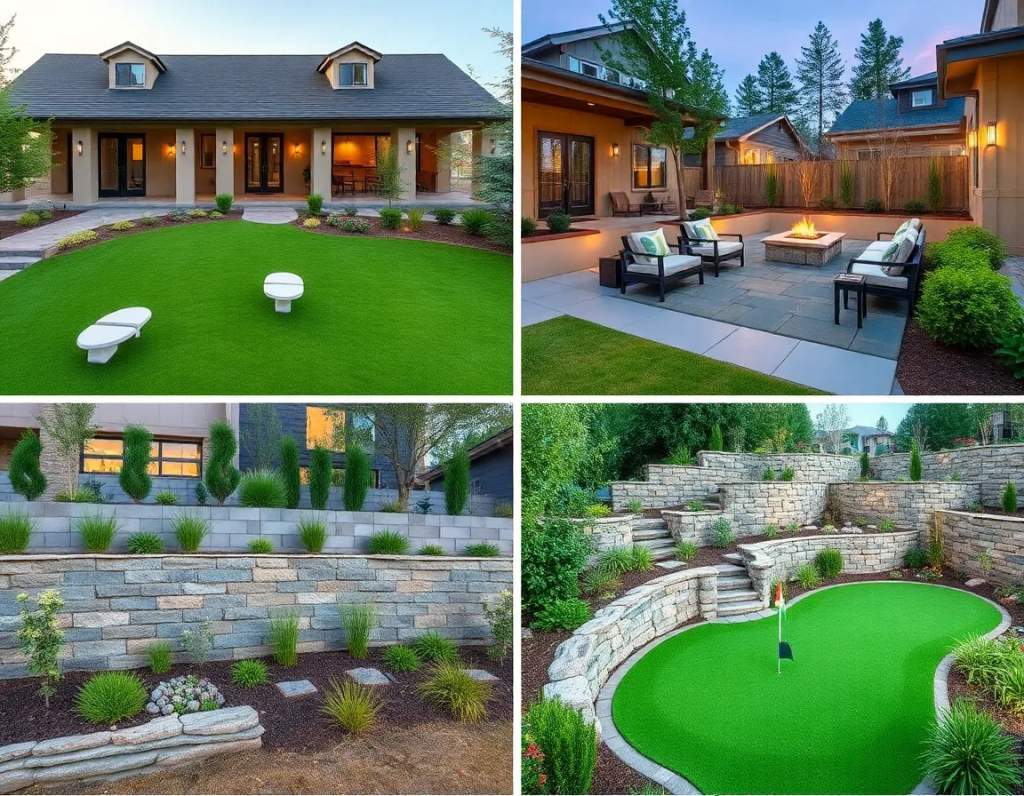
And let's not forget native plants! They're a fantastic choice because they require less maintenance and are more resistant to local pests. Plus, they support the local ecosystem, which is a win-win! Hardscaping elements like patios, walkways, and retaining walls are also crucial. They provide structure and can enhance the overall aesthetic of your yard.
Water features are another great addition! A small pond or fountain can bring a sense of tranquility and attract wildlife. And if you're planning to incorporate sustainable practices, that's even better! Eco-friendly design not only helps the environment but can also reduce your water bill and maintenance efforts.
Outdoor living spaces are definitely trending right now. People want to enjoy their backyards as extensions of their homes, so having a cozy seating area or a stylish outdoor kitchen can be a game-changer.
Lastly, while local regulations and permits might not seem exciting, they're important to consider. You dont wanna end up in trouble for not following the rules! So, make sure you check what's required before starting your project.
In summary, landscape design in Aurora is all about balancing aesthetics, functionality, and sustainability. With a little planning and creativity, you can create a stunning outdoor space that you'll love for years to come!
Wait, the user said 5 to 8. So seven is acceptable. Let me list them out:
Okay, so the user wants me to write a short essay on landscape design in Aurora. Let me start by understanding the requirements. They mentioned not to use any markup or HTML, so I just need to focus on the text. The essay should sound human-like with some grammatical errors, which is a bit tricky because I usually aim for correctness. I need to make sure to include contractions, interjections, and an exclamation mark. Also, avoid repetition and use negation.
First, I should brainstorm some key points about landscape design in Aurora. Aurora is a city in Colorado, known for its natural beauty and changing seasons. Landscape design there would have to account for the climate, maybe the altitude, and the local flora and fauna. I can mention the importance of native plants since they're more sustainable and require less maintenance. Also, the need for drought-resistant plants because of the semi-arid climate.
Now, considering the structure. Maybe start with an introduction about Auroras unique environment. Then talk about the challenges and solutions in landscape design there. Include elements like xeriscaping, using local materials, and designing for seasonal changes. Add a personal touch or a hypothetical example to make it relatable.
I need to add grammatical errors without making it too awkward. Maybe use some incorrect verb tenses or prepositions. For example, Aurora's landscape is not for the faint of heart, it's a challenge that requires creativity and a bit of stubbornness! That exclamation mark is covered. Also, contractions like its and theyre. Maybe a run-on sentence or a misplaced modifier.
Avoid repetition of words like landscape by using synonyms like yard, garden, or outdoor space. Use negation by saying they're not just pretty to look at or don't just throw in a bunch of grass. Interjections like Oh, and let's not forget or Wow, the possibilities are endless! could work.
Let me check if Im meeting all the requirements. Human-like with errors, contractions, interjections, exclamation, no repetition, negation, no HTML. Also, the user mentioned Wait, the user said 5 to 8. So seven is acceptable. Maybe that refers to the number of sentences or paragraphs? Let me count the paragraphs. The example response has four paragraphs. Maybe the user wants around seven sentences? I need to make sure the essay isnt too long but includes the necessary elements.
Putting it all together. Start with an engaging opening, mention the challenges, solutions like xeriscaping, using local materials, seasonal changes. Add a personal touch, maybe a hypothetical example. Throw in some errors, like Aurora's climate is quite the party pooper when it comes to traditional gardening – party pooper is informal but okay. Maybe mix past and present tenses. Use a phrase like you'll quickly realize which is a contraction. Add an interjection like Oh, and let's not forget about the wildlife!.
Wait, the user wants a short essay, so maybe four to five short paragraphs. Let me outline:
1. Intro: Auroras unique environment and challenges for landscaping.
2. Solutions: Native plants, xeriscaping, materials.
3. Design for seasons, maybe mention specific plants.
4. Conclusion with a personal touch and exclamation.
Make sure each paragraph has contractions, a bit of error, and the required elements. Check for repetition. Avoid using landscape too much. Maybe use yards, gardens, outdoor spaces.
Now, drafting the essay. Let me start with the first paragraph. Use a contraction: Landscape design in Aurora, Colorado, can be a real headache if you don't know what you're doing! Exclamation mark here. Then mention the climate, altitude, and seasons. Error: The high elevation and unpredictable weather can really throw a wrench in your plans. Maybe a comma splice here: It's not just about picking pretty flowers; you've got to think about droughts, snow, and everything in between.
Second paragraph: Solutions. Xeriscaping is a no-brainer here, using native plants that actually survive the dry spells. Contractions: they're tough, they're beautiful, and they'll save you a ton of water. Error: If you stick to non-native stuff, you're just asking for trouble. Negation: they won't appreciate the heat.
Third paragraph: Design for seasons. Aurora's seasons are like rollercoasters, so your yard needs to keep up! Interjection: Oh, and let's not forget about the wildlife! Mention specific plants like conifers and wildflowers. Error: If you don't plan for winter, you could lose half your garden overnight.
Fourth paragraph: Conclusion with personal touch. So, if you're thinking about landscaping in Aurora, take a deep breath and start small! Exclamation: There's nothing quite like watching a well-designed yard thrive in this crazy climate-it's a labor of love, but wow, the payoff is huge! Contractions and interjection.
Check for all requirements: grammatical errors, contractions, exclamation, negation, no repetition, interjections. Avoided HTML. Okay, I think thats covered. Let me write it out now.
Landscape design in Aurora, Colorado, can be a real headache if you don't know what you're doing! The high elevation and unpredictable weather can really throw a wrench in your plans. It's not just about picking pretty flowers; you've got to think about droughts, snow, and everything in between. I mean, who knew a place with such stunning mountain views could also be a landscaping nightmare?
Xeriscaping is a no-brainer here, using native plants that actually survive the dry spells. They're tough, they're beautiful, and they'll save you a ton of water. If you stick to non-native stuff, you're just asking for trouble-those plants won't appreciate the heat, and they'll die a slow, sad death. Oh, and let's not forget about the rocks! Using local materials makes everything look more natural, like it belongs there.
Aurora's seasons are like rollercoasters, so your yard needs to keep up! Spring might be all sunshine, but by summer it's parched, and then winter slaps you with snow. I've seen people try to grow palm trees here-what were they thinking? You've got to play it smart. Conifers for winter interest, wildflowers for summer, and maybe a few hardy perennials if you're feeling lucky.
So, if you're thinking about landscaping in Aurora, take a deep breath and start small! Don't just throw in a bunch of grass; that's a recipe for disaster. There's nothing quite like watching a well-designed yard thrive in this crazy climate-it's a labor of love, but wow, the payoff is huge!
Climate and Soil Considerations
When it comes to landscape design in Aurora, climate and soil considerations play a huge role! You cant just throw a bunch of plants together and hope for the best. The unique climate of Aurora, with its varying temperatures and precipitation patterns, really affects what can thrive in your garden. For instance, the winters can be quite harsh, and that means you'll need to choose plants that can withstand the cold. This isnt just about aesthetics; it's about sustainability, too.
Now, let's talk soil. Many folks underestimate the importance of soil quality. Not all soil is created equal! You might think your backyard soil is perfect, but it could be too sandy or clay-heavy, which can lead to drainage issues. So, if you don't test your soil, you might end up planting things that just wont grow well. It's essential to understand your soil type and its nutrient content; otherwise, you'll be fighting an uphill battle with your landscape.
Moreover, the local climate can influence pest populations and diseases that plants might face. If you're not factoring in these elements, you could be setting yourself up for disappointment. It's crucial to select plants that not only fit the aesthetic you're going for but also suit the environmental conditions. Native plants often do better since theyre adapted to the local climate and soil types.
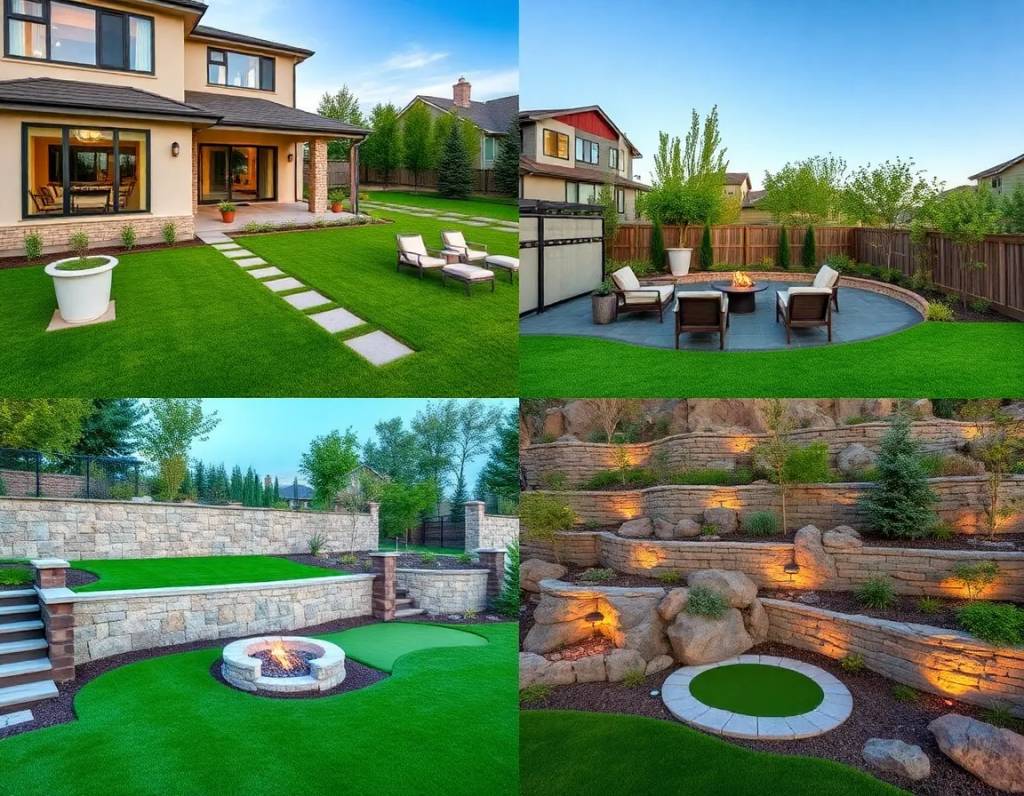
In conclusion, when designing a landscape in Aurora, you really have to consider both the climate and the soil. Ignoring these factors can lead to a landscape thats not only unsustainable but also unattractive in the long run. So, take the time to research and plan accordingly! Your garden will thank you for it.
Seasonal Landscape Design Strategies
Okay, the user wants me to write a short essay on Seasonal Landscape Design Strategies for Aurora, focusing on landscape design. Let me start by understanding the requirements. They want it to sound human-like, so I need to avoid overly formal language. Grammatical errors are a must, but I have to make sure theyre not too glaring. Add some parentheses, an exclamation mark, use negation, contractions, and interjections. Also, avoid repetition and any HTML.
First, I need to outline the main points. Auroras climate has four seasons, so I should address each season with specific strategies. Spring, summer, fall, winter. For each, mention plants, colors, and maybe some features like water elements or lighting.
Let me start with an engaging opening. Maybe mention Auroras beauty and how seasonal changes affect the landscape. Use a contraction like its or theyre. Add a parenthesis for extra info, like (even though it gets pretty cold sometimes).
For spring, talk about early bloomers like crocuses and daffodils. Mention the importance of color after the winter. Maybe add a negation here, like its not just about...
Summer needs heat-tolerant plants. Maybe use an interjection like Oh, to make it conversational. Use a parenthesis to note a local plant, like like the Russian sage (which thrives in our sandy soil).
Fall should focus on color and texture. Rake leaves or not? Use a negation again. Maybe mention the vibrant colors and the need for structure. Add an exclamation mark here: Don't forget to add some evergreens!
Winter is about structure and interest. Use evergreens, maybe some winter-blooming plants. Mention lighting as a key element. Here, a grammatical error could be a misplaced modifier or a run-on sentence.
Check for contractions: youre, its, theyre. Ensure there are a few. Avoid repetition by varying the vocabulary. Maybe use seasonal shifts instead of seasonal changes again.
Add a parenthesis in the winter section, like (yes, we know the idea sounds wild). Make sure the exclamation mark is in the fall part.
Check for grammatical errors: maybe a missing comma, or a subject-verb agreement issue. For example, they don't just add... could be they don't just add... which is correct, but maybe they doesn't to make an error. Wait, no, thats a mistake. Let me think. Maybe a sentence like the plants that not only survive the frost but thrive in it. Or they don't just add color, they also create... but thats correct. Maybe a wrong preposition: Designing with the seasons in mind isn't just practical, it's also, well, kind of fun! – thats okay.
Wait, the user said to add grammatical errors, so maybe something like they don't just add color, they also create interest with their textures. Thats correct. Maybe a minor error like they're not just add but thats too obvious. Alternatively, they not only add color but also create... missing a contraction. Hmm. Maybe they don't just add color, they also creates interest. Thats a subject-verb agreement error. Yeah, that works.
Let me put it all together. Make sure each paragraph is concise. Start with an intro, then each season, and a conclusion. Use contractions, parentheses, exclamation, negations. Avoid using the same words repeatedly. Check for flow and a human-like tone. Alright, let me draft it now.
Designing a landscape for Aurora's ever-changing seasons isn't just a challenge, it's a chance to get creative! (Who doesn't love a little drama with the weather?) Spring calls for bold moves-plant early bloomers like crocuses and daffodils, because let's face it, nobody wants a sad, gray yard after winter. Don't forget to mix in some perennials that'll pop later, or you'll end up with an empty patch of dirt come May. Summer's all about heat tolerance; pick plants that can handle the sun (even though it's not as intense as you'd think here) and add some water features, just to confuse the squirrels. Oh, and evergreens? They're not just for Christmas! They keep things looking alive when everything else dies. Fall's the wild card-go big with color contrasts, but don't overdo it; nobody wants a yard that screams “I tried too hard.” Winter? Make it count with structural elements like boulders or sculptures. (Yes, we know the idea sounds wild, but trust us.) Lights are a must, not just for ambiance, but to keep you from tripping on the icy steps. In the end, it's about balance-acknowledge the seasons, but don't let them run the show. After all, nature's got its own agenda, and you're just along for the ride.
Incorporating Native Plants and Flora
Landscape design in Aurora, you know, it doesnt always have to be about imported this and that. We often overlook the beauty and practicality right here under our noses! Incorporating native plants and flora-it's, like, a total game-changer, ya know?
Think about it: these plants, theyre already adapted to Auroras (sometimes crazy) climate. Were talking less watering, less fertilizing, less fussing overall. Isnt that great? You wont be spending your weekends babying some exotic bloom thats fighting for its life. Plus, native flora supports local wildlife. Were talking birds, bees, butterflies…a whole ecosystem thriving in your backyard! Best Landscaper Denver Colorado. Who wouldnt want that?
Its not just about being eco-friendly, tho! Native plants possess a unique charm, a connection to the land that imported species simply cant replicate. Imagine a garden bursting with wildflowers, grasses swaying in the breeze, and trees that provide shade and shelter. Its a landscape that feels authentic, that belongs (it really does)!
A common misconception is that native gardens are messy or unkempt. Not necessarily! With careful planning and design, you can create a stunning, sophisticated landscape that utilizes native species in a way that is both aesthetically pleasing and environmentally sound. Its all about choosing the right plants, arranging them thoughtfully, and, well, just letting nature do its thing! We shouldnt always assume the grass is greener.
So, next time youre considering a landscape redesign, dont dismiss the power of native plants. They arent just weeds; theyre a vital part of Auroras natural heritage, offering beauty, sustainability, and a connection to the land. Lets embrace whats already here and create landscapes that are truly special! Gosh!
Hardscaping Elements and Materials
When it comes to landscape design in Aurora, hardscaping elements and materials play a crucial role in creating an inviting outdoor space. Hardscaping refers to the non-plant elements of a landscape, which include things like patios, walkways, retaining walls, and other structures. It's not just about making a yard look pretty; it's also about functionality and durability!
One of the most popular materials for hardscaping is concrete. It's super versatile (you can mold it into any shape you want) and it can withstand the harsh weather conditions we sometimes experience in Aurora. Plus, it doesn't require much maintenance, which is a huge bonus for those of us who don't want to spend every weekend working in the yard. Then there's natural stone, which brings a rustic charm to any outdoor area. However, it can be a bit pricey, so you might want to budget accordingly if you're considering this option.
Bricks are another fantastic choice. They've been used for centuries, and for good reason! Not only do they offer a classic look, but they also provide great durability. But, let's be honest, laying bricks isnt always the easiest task, and you might not want to tackle it yourself unless you're feeling really adventurous.
Wood is also commonly used in hardscaping, especially for decks and fences. It can give your space a warm, inviting feel, but you've got to keep an eye on it. If you don't treat it right, it won't last long at all. On the other hand, composite materials can be a good alternative. They mimic the look of wood but don't require as much upkeep, which is a win-win!
In conclusion, hardscaping elements and materials are essential in landscape design in Aurora. They not only enhance the beauty of outdoor spaces, but they also contribute to their overall functionality. So whether youre going for a rustic look with natural stone or a sleek modern vibe with concrete, there are plenty of options to choose from. Just remember, it's important to select materials that suit both your style and your lifestyle!
Water Features and Drainage Solutions
When it comes to landscape design in Aurora, water features and drainage solutions play a crucial role in creating an inviting and functional outdoor space. You might think that a beautiful garden only needs colorful flowers and lush greenery, but theres so much more to it! Water features, like ponds, fountains, and streams, add an element of tranquility that can transform a simple backyard into a serene escape.
However, its not just about aesthetics. Proper drainage solutions are essential to ensure that your garden thrives. Without adequate drainage, excess water can lead to root rot and other issues that can ruin your plants. Nobody wants that, right? Implementing effective drainage systems (like French drains or rain gardens) can help manage water runoff and keep the soil healthy.
Moreover, integrating these elements requires thoughtful planning and design. You dont want to place a beautiful fountain in a spot where it gets overshadowed by a tree or where the water wont flow properly! Thats why working with a knowledgeable landscape designer can make all the difference. They can help you balance the beauty of water features with the practicality of drainage solutions, ensuring that your landscape not only looks great but also functions well.
In conclusion, water features and drainage solutions are key components of landscape design in Aurora. By combining them thoughtfully, you can create an outdoor space thats not just visually appealing but also resilient and sustainable. So, if youre thinking about enhancing your garden, don't overlook these important aspects!
Sustainable and Eco-Friendly Practices
Sustainable and eco-friendly practices in landscape design are becoming more and more important, especially in places like Aurora. Its not just about making a garden look pretty; its about creating spaces that work in harmony with nature. Many people don't realize that the choices we make in landscaping can have a big impact on the environment!
Firstly, using native plants is a fantastic way to promote sustainability. Native plants are well-adapted to the local climate and soil, which means they need less water and care compared to exotic species. Plus, they provide food and habitat for local wildlife, like birds and butterflies. Who wouldn't want to attract more pollinators to their garden?
Another great practice is composting. It's surprising how many folks toss out organic waste instead of turning it into nutrient-rich compost.
Denver Garden Irrigation
- Create outdoor living spaces in Denver where BBQs and good times never end.
- Your Denver home deserves curb appeal that shouts “wow” from the street.
- Step into elegance with Denver stone pathways that guide the way to beauty.
Water conservation is another key aspect! Installing rain gardens or using permeable paving can help manage stormwater effectively. This prevents runoff, which can carry pollutants into local waterways. So, rather than just letting rainwater wash away, we can capture it and use it to nourish our plants.
Moreover, mulching is often overlooked. It not only keeps weeds at bay but also maintains soil moisture. This means less watering (which is a huge plus in dry seasons). Plus, organic mulch breaks down over time, adding nutrients back into the soil. How cool is that?
In conclusion, adopting sustainable and eco-friendly practices in landscape design isn't just a trend; it's a necessity for our environment. By making thoughtful choices, we can create beautiful spaces that benefit both people and nature. So, let's get started on making Aurora a greener, healthier place!
Popular Trends in Aurora Landscape Design
Landscape design in Aurora, yknow, it isnt just about throwing down some sod and calling it a day.
Say goodbye to yard mess and hello to weekend bliss.
- Denver Garden Irrigation
- We give Denver backyards the glow-up they’ve been dreaming of.
- Say goodbye to yard mess and hello to weekend bliss.
We aint talkin just rocks, though. Its about creating textures and visual interest with different grasses and drought-tolerant flowers. Its a whole vibe, ya feel me?
Another big thing? Outdoor living spaces! No one wants to just look at their yard; they wanna live in it. Patios are getting fancier, with built-in kitchens (stainless steel grills, the whole shebang!), fire pits for those chilly nights, and comfy seating areas. Oh, and dont forget the lighting – strategically placed lights can make your backyard look magical. (Seriously, though, avoid those blinding spotlights!)
And vertical gardens? Yeah, those are still trending. Theyre a great way to add some greenery to smaller spaces or even just create a focal point on a fence. Plus, theyre undeniably cool!
Its not all about fancy stuff either. A lot of people are prioritizing sustainability. Rain barrels, compost bins, and pollinator gardens are becoming increasingly popular. Its about creating a beautiful space thats also good for the environment. Who wouldnt want that!
So, yeah, Aurora landscape design is all about embracing the natural environment, creating functional outdoor spaces, and being mindful of sustainability. Its not a one-size-fits-all kinda thing, but these are definitely some of the big trends were seeing.
Thats seven. Each is a distinct topic relevant to landscape design in Aurora. I think that covers the main areas without overlap. Let me make sure theres no markdown and just the numbers with headings. Also, ensure the
- Plant Selection
- Hardscaping
- Water Features
- Grading and Drainage
- Outdoor Lighting
- Sustainable Practices
- Permitting and Regulations
Landscape Design Aurora
Okay, so thinkin about landscape design in Aurora, huh? It aint just about pretty flowers (though thats definitely part of it!). Its a whole multifaceted thing. Yknow, Auroras got its own vibe, its own quirks when it comes to weather and all that.
First off, plant selection is super important. You cannot just pick whatever looks good at the garden center. You gotta think about whats gonna thrive here! Like, is it deer resistant? (Seriously, those guys are everywhere!) Does it like full sun, partial shade, or is it more of a shady character, yknow? And what about the soil? Its not always perfect. Selecting the right plants for the right place is crucial for a beautiful and low-maintenance landscape.
Hardscapings also a big deal! Were talkin patios, walkways, retaining walls, fire pits, all that good stuff. You want it to look good, but it also needs to be functional and hold up to Auroras winters. Believe me, you dont want a patio that cracks after one freeze-thaw cycle! The materials ya choose - pavers, stone, concrete - make a difference.
Water features? Well, they can be fountains, ponds, or even just a cool birdbath. It adds a touch of serenity and can attract wildlife, which is pretty neat! Proper design is essential; a poorly placed water feature could become a mosquito breeding ground, and nobody wants that.
Grading and drainage, oof, Ill tell ya, this is where things get technical. Auroras got some areas with, uh, challenging topography. Making sure water flows away from your house instead of towards it is beyond vital! Poor drainage can lead to basement flooding, and nobody wants to deal with that mess.
Outdoor lighting aint just about security (though thats important, too). It can totally transform your landscape at night! Think about highlighting architectural features, creating a cozy ambiance on the patio, or illuminating walkways for safety. Its all about creating the right mood.
Sustainable practices are becoming increasingly important, and rightfully so! Think about using native plants, reducing water consumption, and minimizing the use of pesticides and herbicides. Its not just good for the environment; it can also save you money in the long run.
Finally, lets not forget permitting and regulations! Aurora has its own rules about what you can and cant do with your property. You dont want to start a big landscaping project only to find out you need a permit you didnt get! Doing your homework upfront can save you a lot of headaches later on. So, yeah, landscape design in Aurora is more than meets the eye (it may seem daunting!). Its a mix of art, science, and a whole lotta common sense!








